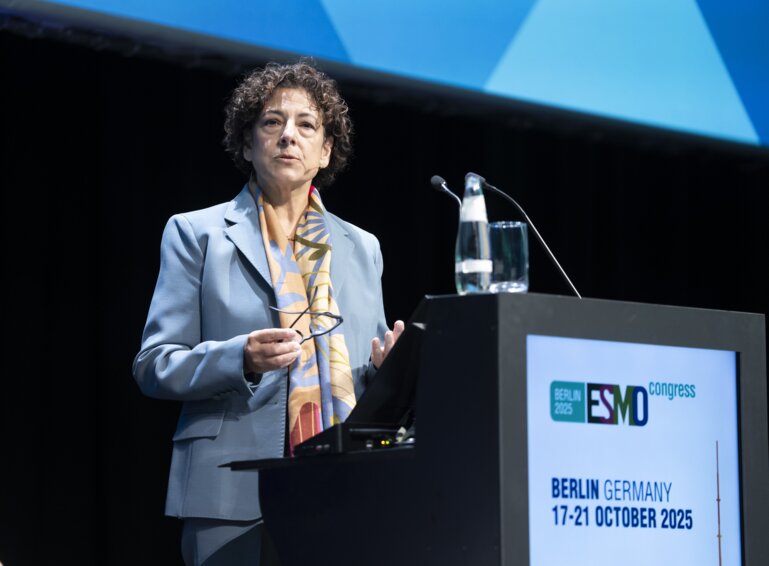Results from TAILORx trial presented at ESMO 2019
A combination of chemotherapy and endocrine therapy offers the promise of long-term recurrence-free survival for patients with hormone receptor (HR)-positive, HER2-negative, node-negative breast cancer, despite having a biologically high risk of disease recurrence.
Yesterday’s Late-Breaking presentation of the TAILORx trial at ESMO Congress 2019, which analysed results for patients stratified as high risk with a recurrence score of 26–100 based on a 21-gene breast cancer assay, found that the rate of freedom from distant recurrence at 9 years was 88.7% when patients received anthracycline and/or taxane-based chemotherapy plus endocrine therapy (Abstract LBA18). This compared with 65.4% for endocrine therapy alone using projected data for similar patients in the NSABP-B20 trial.
Commenting on the results, Dr Matteo Lambertini from IRCCS Policlinico San Martino Hospital – University of Genova, Italy says, "These results are important and reassuring for patients to know that despite a higher risk of disease recurrence due to a biologically aggressive disease, using a combination of chemotherapy and endocrine therapy we can achieve very positive outcomes.” Only 1 in 10 patients with HR+ breast cancer will develop distant metastases at 9 years when given chemotherapy plus endocrine therapy, despite the biologically high risk of disease recurrence.
Previous data from the TAILORx trial have shown that for most patients with biologically low- and intermediate-risk disease, endocrine therapy alone is sufficient and associated with good outcomes. "However, in patients with node-negative disease but high recurrence score as shown in this analysis of TAILORx, there remains controversy over whether we need to give anthracycline- and taxane-based chemotherapy to all patients, or whether a less toxic, taxane-based regimen alone is sufficient for some patients,” adds Lambertini. "If we can avoid the toxicities associated with anthracycline-based regimens without compromising efficacy, then we should do so, but accurate patient selection is needed to make this choice.”
For premenopausal women with HR+ disease who require chemotherapy, another study presented on Saturday at the Congress provided further indirect insight into how to optimise adjuvant endocrine treatment by confirming that ovarian function suppression is an important indicator of positive efficacy outcomes. In this study, chemotherapy-induced ovarian failure (CIOF) in patients treated with anthracycline- or taxane-based chemotherapy was associated with 4-year disease-free and overall survival rates of 87.8% and 95.5%, respectively, compared with equivalent rates of 62.6% and 88.7% in those who did not have CIOF (Abstract 180PD). "While these results do not provide us with new information, they do offer important direction in terms of the clinical management of these patients,” says Lambertini. "We now have very clear evidence from this study and others, such as SOFT and TEXT,1 which show that ovarian function suppression forms an important component of adjuvant endocrine treatment for premenopausal women with HR+ breast cancer treated with chemotherapy due to a higher risk of disease recurrence.”
However, it should be noted that developing CIOF and early menopause are associated with several negative side effects with, among others, an undesirable impact on fertility and sexual functioning. "In premenopausal patients who are candidates for chemotherapy, the potential development of this complication should always be discussed, along with the strategies available to preserve ovarian function and/or fertility,” says Lambertini. Concluding, he comments, "There is the possibility of preserving ovarian function—and the future potential of pregnancy—by initiating ovarian suppression during chemotherapy to reduce the likelihood of developing this potential permanent complication of chemotherapy.”
ESMO Congress 2019 abstracts:
- LBA18 - Clinical outcomes by chemotherapy regimen in patients with RS 26-100 in TAILORx
- 180PD - Impact of chemotherapy-induced ovarian failure (CIOF) on disease-free survival (DFS) and overall survival (OS) in young women with early breast cancer (EBC)






